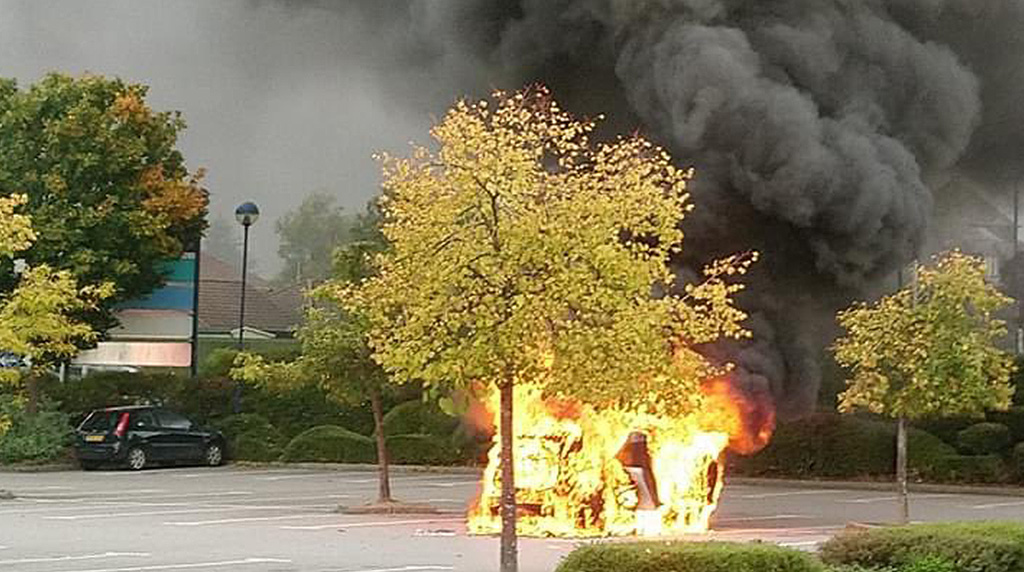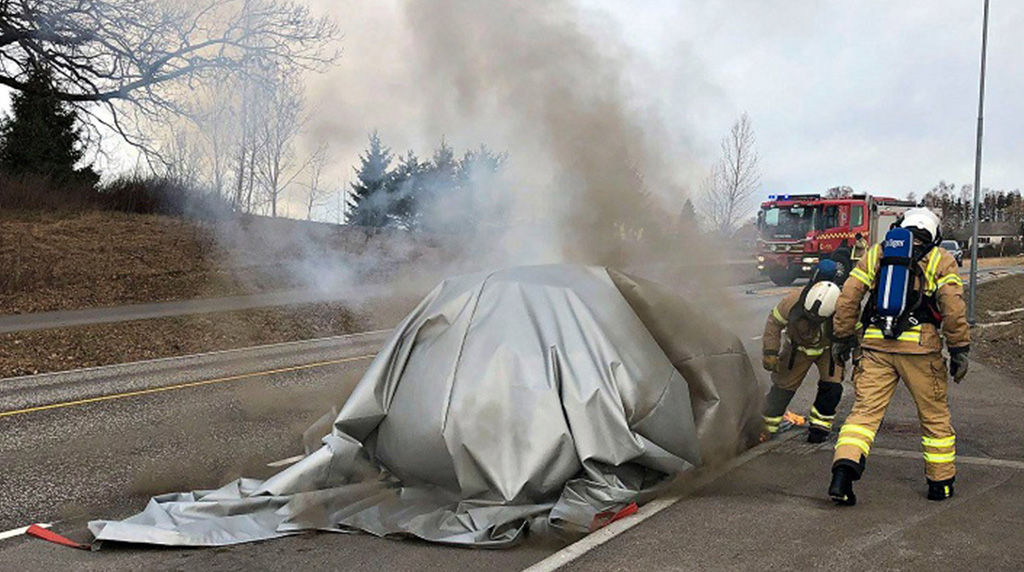The cars on the ship burned with such intensity that parts of the hull above the waterline melted.
All 4000 Volkswagen Group cars destined for the US market have been destroyed. The ship is a write-off and there is considerable downstream damage in terms of lost sales for both VW Group and its dealers. In addition to VWs, the cargo included 189 Bentleys and 1100 Porsches as well as Audis.
While it has yet to be established what started the fire, what kept it burning were an estimated 1000 EVs with lithium-ion batteries based on the fact that 25 per cent of VW production is now dedicated to EVs.
And this is the problem that is so exercising the minds of the shipping and ferry industry. Once an EV catches fire it is almost impossible to put it out, especially if it is in the middle of a deck of other vehicles that are parked just 50cm apart.
Depending on the model, battery packs are made up of around 7000 battery cells and if a fault develops through a manufacturing defect or damage to the pack, heat released from the damaged cell heats adjacent cells.
As the process accelerates it causes what is called a thermal runaway where intense heat spreads through the cells stacked together in the battery pack releasing highly toxic inflammable gasses which explode and then burn.
According to data provided to Australian fire fighting services, these burning batteries reach temperatures of more than 2700 degrees celsius!
This latest fire on the Felicity Ace is the fourth since, in 2019, the Grande America, a roll-on roll-off vessel with more than 2000 new and used vehicles on board, sank in the Bay of Biscay after the cars ignited. The crew of 26 tried to combat the fire but, within hours, the heat was so intense that it weakened the structural integrity of the ship’s bulkheads and hull. There was little that any of the crew members could do but to abandon ship.
Also in the same year, two other vessels reported car fires including a Mitsui OSK Lines car transport carrying 3500 Nissan vehicles, which led to the death of five crew members and severe damage to the vessel and cargo.
The risk for car carriers is huge given deck after deck will be increasingly loaded with EVs and the industry is desperately seeking a solution.
The issue is also becoming an increasing concern for RoRo ferry operators. With used EVs in all different states of repair increasingly finding their way into car ferries that also carry passengers, there is an increasing danger to the public as well.
A Greek ferry taking passengers and cars to Italy caught fire last week with 11 of the 290 people on board losing their lives.
While there is no indication if an EV started the fire (the company said the fire started in the vehicle hold) the fact that more and more EVs are going to find their way aboard these ferries as EV sales increase, is raising a red flag on public safety as well as the safety of ships at sea.
Additionally, there are serious liability implications for the various stakeholders which are covered in this companion article, EV fires, what the lawyers say.
Coincidentally, various fire services and vehicle logistics companies in Australia have been meeting recently to address the issue of EV fires and how to extinguish them.
As the industry searches for answers, some operators of car carriers are no longer accepting used EVs and some are also banning accident-damaged used EVs.
Meanwhile, the International Maritime Organisation issued a paper in June last year in which it said that fire fighting equipment and measures in existing ships carrying cars needed to be re-assessed because of the:
- Demand for ships carrying large quantities of lithium-ion battery powered vehicles
- Frequent occurrence of fire accidents of lithium-ion battery powered vehicles caused by battery self-ignition on land; and
- Reports on several fire accidents occurring on ships carrying lithium-ion battery powered vehicles which are directly related to the vehicle.
The report said: “The ever-increasing demand for ships carrying large quantities of various types of new-energy vehicles including lithium-ion battery powered vehicles and reports on several major fire accidents occurring on ships carrying lithium-ion battery powered vehicles serve as a reminder that the international maritime community needs to pay attention to the special safety risks of ships carrying new energy vehicles”.
The report added: “The main risk of electric vehicles involves the fire caused by thermal runaway of lithium-ion batteries and the gas explosion caused by the release of combustible gas due to thermal runaway”.
Hans Corporaal, chief operating officer of Armacup, an operator of car carriers and RoRo vessels, told GoAutoNews Premium: “EV batteries are indeed a serious concern due to the intensity of those types of fires.
“This issue is not going to go away and the concern by IMO is most definitely justified.
“Armacup, like any other operator and owner of RoRo and Car Carriers, is closely following any developments in this regard.
“Fire prevention on board vessels is not only concerning EVs but also other alternative power sources to ICE vehicles such as hydrogen and other alternative powered vehicles. We cannot be certain yet if any of these alternative power sources pose more or less risk than what we have with ICE vehicles,” Mr Corporaal said.
According to various sources, the damage bill for a car catching fire on a ship is massive:
- Value of the cars lost: $400 million
- Cost of lost sales: $155 million
- Cost of the vessel: $100 million
- Cost of salvage: $150 milion
One possible solution would be to cover each EV with a special fire-proof blanket at the time an EV is being loaded and tied down to the car deck.
These would have the fire retardant qualities along the lines of those used by Bridgehill car fire blankets which in normal use are unfolded and dragged over burning cars thus containing the fire under the cover.
Some car carriers and ferry operators have already begun equipping their vessels with these blankets.
The blankets are made from similar material to that used on space vehicles to protect them from the intense heat generated on re-entry into earth’s atmosphere.
These blankets not only starve the fire of oxygen but they prevent reignition of the battery.
This solution would add serious cost to the loading and unloading of cars but it might prove to be the only solution at this point to preventing the catastrophic maritime losses being experienced so far.
Read more: EV fires loom large
By John Mellor















 Read More: Related articles
Read More: Related articles

